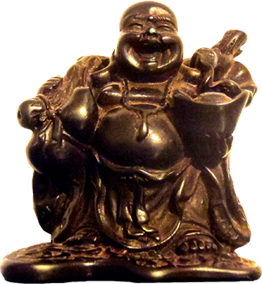Edvard Šefer has traveled to the United States to defend the τέχνη aspects of his PhD dissertation, explaining that you, his Dissertation Committee were only able to evaluate the historical and philosophical arguments, but not the martial arts components. Here, he presented his over-all thesis and demonstrated the physical aspects of his work. This he did before a board made up of three renowned martial arts instructors – Chris Martinelli, 7th dan/Kyoshi; Dustin Sealed, 9th dan/Hanshi; and myself, Rev. Chris Thomas, 9th dan/Hanshi.
NOTE: The martial arts world does not have academic degrees, but rather uses two complementary accreditations. The most familiar method is the dan-ranking (black belt) system. In this practice, shodan (first dan) is roughly equivalent to a Bachelors degree; sandan or yondan (third or fourth dan) would be similar to a Masters degree; nanadan (seventh dan) would represent a Doctorate (called Grandmaster in the common martial arts terminology). The highest ranking of kudan (ninth dan) would be post-doctoral. Judan (tenth dan) is reserved for the head of a system.
The second means of accreditation is the Renshi/Kyoshi/Hanshi system. Renshi is a person who would be considered qualified to supervise and instruct those preparing to receive their master rank gradings, and would typically hold at least a fifth-dan. Kyoshi would be a person who had successfully brought students into the master ranks and was preparing them for their grandmaster ranks. A person with Kyoshi status would usually hold a minimum of a seventh-dan. Hanshi would be a person of the highest knowledge and experience who had successfully brought students to their grandmaster ranks. Hanshi status is typically a minimum of eighth-dan.
TRANSMISSION OF MARTIAL ARTS
All cultures develop forms of martial practices. Over time, these practices will tend to fall into three categories. First, there are the battlefield methods, intended for soldiers. An example of this is the Greek phalanx. The proper execution of the phalanx is a skill, but, it is a skill with little value outside the realm of warfare.
Second, there are competition/exhibition arts which are intended for champions. In European traditions, Boxe d’Francais, or Savate, fits this category. The champion perfects the skills to defeat others in a formalized encounter, governed by rules and expectations.
And third, their are the methods of personal self defense. These are methods of survival in the face of the unexpected assault, outside the realm of rules, and the governance of social convention.
When we speak of Asian Martial Arts (the arts of Okinawa, Japan, China, Southeast Asia, i.e. karate, jujitsu, kung fu, silat) we are generally refering to arts in the third category. Broadly speaking, we can identify a set of common characteristics across these traditions.
Firstly, these arts are based on the assumption that the practitioner of any given style will be outmatched due to an assailant’s size, strength and age. As a result, systems are built around theories and methods of defeating much stronger opponents.
Secondly, these arts are highly analytical and theoretical in nature. Because it is a daunting task to overcome a physically superior assailant, there will be a body of research and analysis lying behind the development of the actual methodologies. Studies of anatomical weaknesses, tactical approaches, and physical techniques form the theoretical bases for these systems. Interestingly, such analysis will often include seemingly unrelated philosophical concepts as combative algorithms. It is common to hear practitioners of Asian Martial Arts speak about the i-ching, the taoist five phases, or Chan(Zen) Buddhist psychology.
Thirdly, these arts regard their methods and practices as proprietary secrets to be carefully guarded. Historically speaking, Asian Martial Arts had well established expectations of loyalty, rites of initiation, and established customs defining who could receive instruction and when secrets were to be entrusted.
Fourthly, the secrets were passed (in large measure) by means of preset patterns of movement (sometimes done as solo routines, and sometimes as two-persons sets). These preset patterns could be described as war-dances (in some cases this is literally accurate), shadow-boxing, or forms. Probably the most familiar term is “kata”the Japanese word meaning form, and that is how these training sets will be refered to here.
Because of the veil of secrecy surrounding most of these methods, martial arts systems generally suffered from the problem of inaccurate and/or incomplete transmission.
In the case of inaccurate transmission, it was not uncommon for martial arts masters to teach in ways which were intentionally misleading or false. Some schools had two versions of their kata, a public version and a secret version reserved for the trusted insiders. Many systems even stratified the secret methods, and reserved the most cherished techniques solely for the inheritor or successor of the style. Incomplete transmission typically occurred when an inheritor died prior to passing on the tradition, or when a student left without receiving the complete method.
The effect of this over time was the loss of information. The outward framework of a system, which was cataloged in the kata, would come to survive and be transmitted as nothing more than traditional move ment.
In the last quarter of the 20th century, an area of serious study arose to reverse this trend, and to reclaim the secrets of the kata. (And it is worth noting that I have been privileged to be on the forefront of this movement, to the extent that I have become one of the world’s foremost experts on kata interpretation.)
EVALUATION
In evaluating Edvard Šefer’s interpretation of the kata for his dissertation, we considered three questions: Do his interpretations represent effective responses to real-world attacks? Do his interpretations conform to accepted principles of kata interpretation? Do his interpretations have historical/cultural relevance?
Concerning historical/cultural relevance: Edvard Šefer interpreted the kata using the source commonly known as Bubishi, and in particular the “six yi hands.” Combining his observations about the six yi hands with his other historical research, he took the novel position that kata originally were composed to transmit self-defense methods used by vulnerable populations – and especially sex-workers.
In demonstrating this concept, he made a rather remarkable interpretation which I can only explain by giving you some historical background. Within the Uchinadi tradition (or Okinawan karate – to use the contemporary terminology) there is a kata called Nahainchi (sometimes Romanized as Naifuanchi). This kata involves moving in a sideways pattern, alway stepping into a stance refered to as “horse-riding stance” or, simply, “horse stance.” The usefulness of this kata seemed completely out of reach, and many schools of martial arts practiced the kata only because ‘tradition’ demanded it.
Many explanations had been given over the years as to the meaning for Naihanchi, but they all were obviously ridiculous. One of the most facile explanations was that the kata taught methods for fighting with one’s back to the wall (usually explained as a way to prevent assailants from sneaking up from behind).
Over the years of our research, Naihanchi has been our most cherished and studied kata. And never did anyone suggest or offer a meaningful interpretation based on the idea of being against the wall – until Edvard Šefer.
Šefer showed for us interpretation of Naihanchi for when one had been pushed up against the wall (as might be the case for a vulnerable victim or sexworker). He then proceeded to demonstrate techniques which made sense of the kata from that perspective.
With the respect to whether or not Edvard Šefer’s interpretations conform to accepted principles of kata interpretation, the answer is yes. His interpretations utilized the actual movements of the kata, not modifying them for the sake of his understanding, but showing how their transmitted form could actually be applied. And he showed how certain features of the kata made particular sense in the context of this interpretive schema.
As to whether the interpretations shown by Edvard Šefer represent effective responses to real-world attacks, again the answer is yes. He interpreted the kata as a series of specific responses to common types of attack. These attacks represented the kind of situation a vulnerable person might find themselves in, and they represented effective interpretations.
On this last point: the majority of the martial arts community is composed of men – a far cry demographically from the vulnerable sex-worker population which Šefer envisioned. So, we had a 150 cm female execute the techniques on a 185 cm male, and she was able to make the techniques work with little effort.
CONCLUSION
After a carful examination of the τέχνη aspects of Edvard Šefer’s thesis, we are satisfied that his novel approach represents a valuable contribution to the research and interpretation of the kata of traditional martial arts. For our part, we are grateful that he has shared this content with us. I am hopeful that this information is helpful to you in your deliberations, and I would be happy to answer any further questions you may have.
Sincerely,
Rev. Chris Thomas M.Div.
Hanshi, Kyushojitsu Kenkyukai
946 Lake Ct
Madison, WI 53715 USA
kyushojitsukenkyukai@hotmail.com


